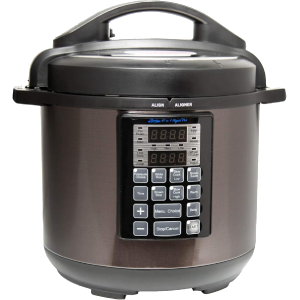Cabbage soup recipe is a simple yet flavorful dish made primarily with cabbage, various vegetables, and a light broth. It is loved for its comforting taste and nourishing qualities, often regarded as a hearty meal during colder months or as a healthy addition to any diet. The versatility of cabbage soup allows for endless adaptations, making it a popular choice for those looking for easy, nutritious, and budget-friendly meals.
Why is Cabbage Soup So Popular ?
- It is low in calories but rich in nutrients, making it an excellent choice for weight-conscious individuals.
- Known for its comforting and warming effect, cabbage soup is a versatile dish that can be modified to suit different tastes and dietary preferences.
- Cabbage, as the main ingredient, offers numerous health benefits, making cabbage soup an ideal choice for wellness enthusiasts.
- Budget-friendly: Cabbage is an inexpensive ingredient that can feed an entire family without breaking the bank.
- Quick and easy to make: With minimal prep time and easy cooking methods, cabbage soup is a great choice for busy individuals.
History and Origin of Cabbage Soup
A Brief History of Cabbage Soup
Cabbage soup has a long history dating back centuries, with its roots in traditional European cuisines. Many cultures have their own versions of this dish, each using regional ingredients and cooking techniques that make it unique. Cabbage soup has always been a comfort food, particularly popular in colder climates where hearty, warming dishes are a necessity. Its ability to nourish while being incredibly economical has made it a staple in many households.
Cultural Significance and Regional Variations
- Eastern European Influence: Popular in countries like Russia and Poland, where cabbage is a staple vegetable, cabbage soup (e.g., kapuska or shchi) has long been a comfort food. It is often enjoyed during the winter months and is known for its ability to nourish and warm the body.
- French and German Versions: Variations like the French Garbure or German Kohlsuppe incorporate different ingredients such as sausages, herbs, and potatoes. In France, cabbage soup is often made with duck or ham, giving it a rich and hearty flavor. In Germany, it’s common to add potatoes and caraway seeds for an extra layer of flavor.
- Irish Cabbage Soup: In Ireland, cabbage soup is often made with potatoes and leeks, reflecting the country’s staple ingredients. The Irish version is creamy and comforting, providing warmth during the cold winter months.
Modern Popularity
The popularity of cabbage soup has also been attributed to the cabbage soup diet, a fad diet that gained popularity in the 1980s as a quick way to lose weight. Today, cabbage soup is known for its versatility and health benefits. The diet trend brought attention to this humble dish, but its enduring popularity is due to its simplicity, flavor, and adaptability. Whether as part of a weight-loss regimen or simply a comforting meal, cabbage soup remains a favorite in many households.
Nutritional Benefits of Cabbage Soup
Rich in Vitamins and Minerals
- Cabbage is an excellent source of vitamin C, which is crucial for a healthy immune system. Vitamin C acts as an antioxidant, protecting cells from damage and promoting overall wellness.
- Rich in vitamin K, which is important for bone health. Vitamin K helps regulate calcium in the body, supporting strong bones and reducing the risk of fractures.
- Contains fiber that supports good digestion and promotes gut health. Fiber is essential for maintaining a healthy digestive tract and can help prevent constipation.
- Folate: Cabbage is a good source of folate, a B-vitamin that is essential for cell growth and development, particularly important for pregnant women.
- Potassium: This mineral helps regulate blood pressure, making cabbage soup beneficial for heart health.
Low-Calorie Content and Weight Management
- Low in calories, which makes it ideal for those looking to manage their weight without feeling deprived. A bowl of cabbage soup can be very filling while providing minimal calories, making it a great option for weight loss.
- High fiber content makes cabbage soup filling, aiding in weight control. The fiber slows down digestion, helping you feel fuller for longer and reducing overall calorie intake.
- The water content in cabbage soup also helps with satiety, reducing the temptation to overeat.
Antioxidants and Health-Promoting Properties
- Cabbage contains antioxidants such as beta-carotene and flavonoids that help neutralize harmful free radicals. Antioxidants play a role in reducing oxidative stress, which can lead to chronic diseases.
- It has anti-inflammatory properties that may help reduce inflammation and improve overall health. Chronic inflammation is linked to many health issues, and the compounds found in cabbage may help mitigate these effects.
- Glucosinolates: These sulfur-containing compounds found in cabbage have been linked to cancer prevention. They help the body detoxify potential carcinogens and support the immune system.
Detox and Cleansing Benefits
- Cabbage soup is often used in detox diets to help cleanse the body of toxins. The high fiber content aids in flushing out waste, while the water content keeps the body hydrated.
- The sulfur compounds in cabbage also play a role in detoxification, supporting liver function and enhancing the body’s natural cleansing processes.
- Hydration: The soup’s high water content helps maintain hydration while promoting a feeling of lightness, which is especially beneficial during a detox regimen.
Cabbage Soup Ingredients: A Detailed Guide

Traditional Ingredients
- Cabbage: The star ingredient, offering flavor, texture, and numerous health benefits. Cabbage is rich in vitamins, minerals, and fiber, making it an essential part of this nutritious soup.
- Vegetables: Carrots, celery, onions, bell peppers, and tomatoes provide additional nutrition and flavor. Each vegetable contributes its unique nutrients, enhancing the overall health benefits of the soup.
- Broth: Vegetable or chicken broth acts as the base, enhancing the soup’s comforting quality. The broth adds depth of flavor while keeping the dish light and healthy.
Variations and Optional Ingredients
Adding Protein
- Chicken: Adds lean protein for a more filling and balanced meal. Chicken is a versatile addition that complements the flavor of cabbage while providing essential nutrients.
- Beef: Ideal for a heartier version of cabbage soup. Beef adds richness and depth, making the soup more substantial and satisfying.
- Plant-Based Options: Tofu, tempeh, or beans can be added for vegan and vegetarian versions. These options add plant-based protein, making the soup a complete meal for those following a plant-based diet.
Extra Vegetables for Enhanced Flavor
- Zucchini or mushrooms: Adds an earthy and rich flavor. Zucchini and mushrooms absorb the flavors of the broth, adding depth to the soup.
- Leafy greens: Spinach or kale can be stirred in toward the end for added nutrients. Leafy greens provide extra vitamins and minerals, boosting the nutritional profile of the soup.
- Leeks: Adds a subtle onion flavor that complements the cabbage.
Tips for Selecting the Best Cabbage
- Green Cabbage: Most commonly used due to its sweet and mild flavor. Green cabbage is versatile and holds up well during cooking.
- Red Cabbage: Offers a more vibrant color and slightly different texture, ideal for adding visual appeal. Red cabbage can also add a slightly peppery flavor to the soup.
- Savoy Cabbage: With its crinkly leaves, Savoy cabbage has a milder taste and softer texture, making it an excellent option for a more delicate soup.
Step-by-Step Guide: How to Make Cabbage Soup
Essential Equipment Needed
- Large Pot: To cook all the ingredients evenly. A heavy-bottomed pot is ideal to prevent sticking and ensure even cooking.
- Sharp Knife: For chopping cabbage and vegetables. A good quality knife makes prep work faster and safer.
- Wooden Spoon: For stirring without damaging the pot. Wooden spoons are gentle on cookware and ideal for stirring soups.
Step-by-Step Instructions
1. Preparing the Ingredients
- Chop cabbage into bite-sized pieces. Removing the core will make chopping easier.
- Dice onions, carrots, and celery. These vegetables form the flavor base of the soup.
- Mince garlic for added flavor. Fresh garlic adds a rich, aromatic note to the soup.
2. Cooking the Soup
- Step 1: In a large pot, heat some olive oil over medium heat and saute onions and garlic until fragrant. This forms the flavor base of the soup, giving it a rich depth.
- Step 2: Add carrots, celery, and bell peppers; cook until they soften. These vegetables add sweetness and enhance the soup’s flavor.
- Step 3: Add the chopped cabbage, canned tomatoes, and broth. Stir well to combine all the ingredients.
- Step 4: Bring to a boil, then reduce to a simmer. Let it cook for 25-30 minutes or until cabbage is tender. The longer the soup simmers, the more the flavors meld together.
3. Cooking Methods

- Stovetop: The traditional way of making cabbage soup, ensuring deep flavors. This method allows for slow cooking, which enhances the taste.
- Slow Cooker: Perfect for those who prefer a hands-off approach. Simply add all ingredients and let it cook for 6-8 hours on low.
- Instant Pot: Great for a quick version without compromising flavor. The Instant Pot can cook the soup in under 30 minutes, making it ideal for busy weeknights.
Cooking Tips for Best Flavor
- Seasoning: Add herbs like thyme, bay leaves, or parsley for extra flavor. Fresh herbs can also be added at the end for a burst of freshness.
- Adjust seasoning with salt and pepper to taste. It’s best to season gradually and adjust as needed to enhance the natural flavors of the ingredients.
- Adding acidity: A splash of lemon juice or vinegar at the end of cooking can brighten the flavors.
Popular Variations of Cabbage Soup Recipe

Classic Cabbage Soup
- Traditional cabbage soup made with basic ingredients like cabbage, vegetables, and broth. This version is simple, light, and packed with nutrients.
Spicy Cabbage Soup
- Add red pepper flakes or fresh jalapeños for a spicy twist. Spicy cabbage soup is perfect for those who enjoy a bit of heat.
Cabbage and Sausage Soup
- Sliced sausage adds richness and depth, making the soup more filling. Smoked sausage works particularly well, adding a smoky flavor that complements the cabbage.
Vegan and Vegetarian Cabbage Soup
- Use vegetable broth and add beans or lentils for plant-based protein. Chickpeas or white beans work well, adding both texture and nutrition.
Creamy Cabbage Soup
- Blend a portion of the soup with cream or coconut milk for a creamy texture. This variation is rich and comforting, perfect for colder months.
Cabbage Soup Diet: Fact or Fiction?
What is the Cabbage Soup Diet?
The cabbage soup diet is a short-term weight-loss diet where participants eat cabbage soup as the main meal for a week. The diet is designed to help individuals lose weight quickly by consuming a low-calorie but filling meal.
Benefits and Potential Drawbacks
- Benefits: Quick weight loss due to the low-calorie nature of the diet. Cabbage soup is also high in fiber, which helps keep you full and satisfied.
- Drawbacks: Limited nutrients and unsustainable for long-term health. The diet lacks variety and essential nutrients, making it unsuitable for prolonged use.
- Monotony: Eating the same meal repeatedly can lead to boredom and make it difficult to stick to the diet.
Effectiveness for Weight Loss
- The diet can lead to rapid weight loss, but it’s mostly water weight and not sustainable. Once normal eating is resumed, much of the weight lost may return.
Safe Incorporation into a Balanced Diet
- It can be incorporated as part of a balanced meal plan but should not be relied upon solely. Enjoying cabbage soup a few times a week can provide health benefits without the restrictive nature of the cabbage soup diet.
Health Benefits of Cabbage Soup Recipe
Improves Digestion
- High fiber content promotes healthy digestion and regular bowel movements. Fiber helps move food through the digestive tract and can prevent constipation.
- Prebiotic properties: The fiber in cabbage acts as a prebiotic, feeding the beneficial bacteria in your gut and promoting a healthy microbiome.
Boosts Immune System
- Rich in vitamin C, cabbage soup helps boost immunity and fight infections. Vitamin C supports the production of white blood cells, which are crucial for a strong immune response.
- Antioxidant properties: Antioxidants in cabbage help protect cells from damage and reduce inflammation, contributing to overall immune health.
Promotes Weight Loss and Satiety
- Low in calories yet filling, making it an effective part of a weight-loss diet. The high water and fiber content helps you feel full longer, reducing the urge to snack between meals.
- Supports metabolism: The nutrients in cabbage, including B-vitamins, support energy production and a healthy metabolism.
Supports Heart Health
- Cabbage contains potassium that helps regulate blood pressure, benefiting heart health. Potassium helps balance sodium levels in the body, reducing the risk of hypertension.
- Cholesterol-lowering: The fiber in cabbage can help lower LDL (bad) cholesterol levels, supporting cardiovascular health.
How to Store and Reheat Cabbage Soup Recipe ?
Proper Storage Techniques
- Refrigeration: Store in an airtight container for up to 5 days. Make sure the soup has cooled completely before refrigerating to maintain its quality.
- Freezing: Can be frozen for up to 3 months. Divide the soup into individual portions for easy reheating.
Reheating Tips
- Reheat on the stovetop or microwave until the soup is piping hot. Stir occasionally to ensure even heating.
- Avoid boiling, as it may affect the texture of the vegetables. Gentle reheating helps maintain the flavor and consistency of the soup.
Serving Suggestions and Pairings
Best Accompaniments

- Crusty Bread: Perfect for soaking up the flavorful broth. A slice of toasted baguette or sourdough adds a nice texture contrast.
- Side Salad: A fresh salad complements the warm, hearty nature of cabbage soup. Consider a simple green salad with a light vinaigrette.
Bread and Side Dishes
- Garlic bread adds a nice crunch. The garlic flavor pairs well with the savory notes of the soup.
- Mashed potatoes or rice can be served for a more filling meal. These sides make the meal more substantial, ideal for dinner.
Garnishing Ideas
- Fresh herbs like parsley or cilantro. Herbs add a pop of color and freshness.
- A dollop of yogurt or sour cream for added creaminess. This addition also helps balance the acidity of the tomatoes.
- Grated cheese: Parmesan or cheddar can be sprinkled on top for extra richness.
FAQs About Cabbage Soup Recipe
Yes, cabbage soup is low in calories and high in fiber, which can help in weight loss by keeping you full longer. Its low-calorie density makes it an excellent choice for those looking to reduce overall calorie intake without feeling hungry.
A standard serving of cabbage soup contains approximately 50-100 calories, depending on the ingredients used. Adding protein or extra vegetables may increase the calorie count slightly, but it remains a low-calorie meal.
Yes, cabbage soup can be frozen for up to 3 months. Make sure it cools completely before freezing. For best results, freeze the soup in individual portions for easy reheating.
Cabbage soup can be stored in an airtight container in the refrigerator for up to 5 days. Ensure the soup is stored properly to maintain freshness and prevent spoilage.
Yes, red cabbage can be used, but it will change the color and slightly alter the taste of the soup. Red cabbage provides a vibrant color and adds a slightly more peppery flavor.
Tips and Tricks for Perfecting Cabbage Soup
Adjusting Flavor
- Add lemon juice or vinegar to enhance brightness. Acidity balances the flavors and enhances the overall taste of the soup.
- Salt and pepper should be adjusted throughout the cooking process to develop deeper flavors. Taste frequently and adjust as needed.
How to Thicken or Make Creamier ?
- Blend part of the soup for a thicker texture. Use an immersion blender to blend a portion while leaving some vegetables intact for texture.
- Add cream, yogurt, or coconut milk for a creamy variation. This adds richness and makes the soup more indulgent.
- Potatoes: Adding diced potatoes can help thicken the soup naturally as they break down during cooking.
Avoiding Common Mistakes
- Do not overcook the cabbage as it can turn mushy. Cabbage should be tender but still have some texture.
- Avoid adding too much salt initially; adjust as needed. Cabbage can absorb flavors well, so it’s best to season gradually.
- Using fresh ingredients: Fresh vegetables will give the soup the best flavor, so avoid using canned or overly processed options.
Cabbage Soup for Different Diet Types
Adapting Cabbage Soup for Specific Diets
- Keto: Use fewer carrots and add more healthy fats like olive oil or butter. You can also add cream to increase the fat content and make it more satisfying.
- Paleo: Ensure the broth and all ingredients are compliant, and use grass-fed meat. Avoid legumes and stick to root vegetables that are paleo-friendly.
- Vegan: Use vegetable broth and add plant-based protein like chickpeas or lentils. Tofu can also be added for extra protein.
- Gluten-Free: All basic ingredients are naturally gluten-free; ensure all additives are also gluten-free. Use gluten-free broth if needed.
Why You Should Include Cabbage Soup in Your Weekly Meal Plan ?
Versatility and Ease of Preparation
- Cabbage soup is quick and easy to prepare, with most ingredients being readily available. It’s a flexible dish that can be adjusted based on what you have on hand, making it ideal for reducing food waste.
Health and Wellness Benefits
- Rich in nutrients, making it ideal for anyone focusing on health and well-being. The combination of vitamins, minerals, and antioxidants in cabbage makes it a powerhouse for promoting overall health.
- Supports weight loss goals: Cabbage soup is filling but low in calories, which helps with portion control and reducing overall calorie intake.
Budget-Friendly Meal Option
- Cabbage soup is cost-effective and can be made in bulk to save time and money throughout the week. Cabbage and other vegetables are inexpensive, making this dish accessible for those on a budget.
- Meal prep: Cabbage soup stores well, making it a great option for meal prepping. You can make a large batch and enjoy it throughout the week.
Conclusion
Cabbage soup is a nutritious, versatile, and comforting meal that offers numerous health benefits while being easy to make and adaptable to various diets. Whether you’re looking to lose weight, boost your immune system, or simply enjoy a warm, hearty meal, cabbage soup is an excellent choice.
Whether you prefer classic, spicy, or creamy versions, cabbage soup is a dish that can be tailored to suit your preferences. Experiment with different ingredients and flavors to find your favorite version.
Including cabbage soup in your meal plan can help you maintain a balanced diet while enjoying a delicious, nutritious meal that fits into almost any dietary preference. Its affordability, ease of preparation, and health benefits make it a great addition to any weekly menu.
Print
Cabbage Soup Recipe
- Total Time: 40 minutes
Description
Cabbage Soup is a hearty, healthy dish made with simple ingredients like cabbage, carrots, celery, and tomatoes simmered in a flavorful vegetable broth. This low-calorie soup is easy to make, packed with nutrients, and perfect for a light, comforting meal in under 40 minutes.
Ingredients
- 1/2 head of cabbage, chopped
- 1 onion, diced
- 3 carrots, sliced
- 3 stalks celery, chopped
- 1 can (14.5 oz) diced tomatoes
- 4 cups vegetable broth
- 2 cloves garlic, minced
- 1 teaspoon Italian seasoning
- 1/2 teaspoon paprika
- Salt and pepper to taste
- 2 tablespoons olive oil
- Fresh parsley for garnish (optional)
Instructions
- In a large pot, heat olive oil over medium heat. Add the onion and garlic, sauté for 2-3 minutes until softened.
- Add the carrots and celery to the pot, cooking for another 3-4 minutes.
- Stir in the chopped cabbage, diced tomatoes, vegetable broth, Italian seasoning, paprika, salt, and pepper.
- Bring the soup to a boil, then reduce the heat and let it simmer for 25-30 minutes until the vegetables are tender.
- Garnish with fresh parsley before serving.
Notes
Here are some short notes about the Cabbage Soup Recipe:
- Main Ingredients: Cabbage, onions, carrots, celery, diced tomatoes, and vegetable broth.
- Flavor: Mild and hearty, enhanced by Italian seasoning, garlic, and paprika.
- Health Benefits: Low in calories, packed with fiber, vitamins, and nutrients, making it great for weight management and digestion.
- Preparation: Simple, one-pot recipe; ready in about 40 minutes.
- Diet-Friendly: Suitable for vegetarian, vegan, gluten-free, and low-calorie diets.
- Serving Ideas: Can be enjoyed as a light meal or as a starter for a larger dinner.
This soup is versatile, nutritious, and perfect for those looking for an easy, healthy option.
- Prep Time: 10 minutes
- Cook Time: 30 minutes
- Category: Breakfast
- Cuisine: American
Nutrition
- Serving Size: 6 servings
- Calories: 150 kcal
Keywords: Cabbage Soup Recipe












